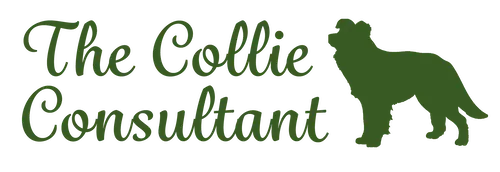The ladder of aggression, first created by Kandal Shepherd, is a great tool for summarising how a dog’s behaviour changes from mild concern to bite. On the right hand side of the image are a series of behaviours, ranging from the bottom of the diagram in greeen to the top of the diagram in red, and they represent the way in which dogs try to communicate that they are feeling uncomfortable about something, from feeling mild concern at the bottom of the ladder to feeling that they have no choiice but to bite at the top of the ladder.
When dogs first become worried about something, we see the behaviour right at the bottom of the ladder, in green. The first signs are yawning, blinking and lip/nose licking. Whilst these are all quite normal behaviours in their usual contexts, if you see your dog doing any of these communication signals in a specific situation in which he could be anxious, move him away. Looking at videos on the internet, we quire often see border collies being hugged and owners putting their faces very close to their collie’s face. Many collies really aren’t a fan of this and you can often see them lip licking, yawning and blinking.
If the dog’s communication signals that he isn’t comfortable with what’s happening, then he may turn his head away, then his body, before actually walking away to get himself out of the situation. This is when the green arrows start to turn yellow as the dog becomes more concerned and anxious. They will try to creep away, body held low, and if they can’t move away or feel safer where they are, they will crouch with their tail tucked tightly under their body, ears back. Some may then lie down with their leg up. This is a communication signal that is frequently misinterpreted by people – when dogs are meeting someone for the first time and they lie down with thier leg up, it can easily be confused with the dog wanting his tummy tickled. If he does this with the owner and they have a good relationship, then he could be wanting his tummy tickled but if he does it with a stranger, then he is more likely to be worried and is trying to communicate that he’s no threat. Some dogs, if they are particularly fearful and impulsive, could easily feel so anxious about being touched when in this position, that they sometimes feel they have no choice but to bite.
After this, moving into the red arrows, are the signs that people most frequently recognise as signs of anxiety in dogs: stiffening up, staring, growling, snapping and finally biting.

Often dogs will miss out some of these behaviours out, before they finally resort to actual lunging and biting, particularly if they have been told off for stiffening up, staring and growling. This is why it’s important not to punish the dog for some of these lower level signals that show they are not happy – not listening to our dogs and not acting on their behalf can lead to missing out the lower signals and a dog that just goes straight to bite when he is pushed. This type of dog is much more dangerous because the bite behaviour is so unpredictable.
ALWAYS listen to your dog’s communication signals, and this ladder of aggression is a great tool when working with aggressive dogs. Owners often start to notice lip licking and yawning in situaitons in which they thought their dog had been comfortable and happy, so understanding that this is not the case, helps to keep dogs calmer and we can act on their behalf and remove them from situation that they find stressful well before they feel compelled to bite.
The writing on the left hand side of the ladder of aggression sums up hopw the dog is feeling at each stage. Sharing this information with children can also help to keep children safe – children should always be shown this image, and taught that dogs that lip lick and yawn may be feeling stressed, and to move away if they see that happening.
This is a graphic that I always share with my clients and it’s amazing how their understanding and communication with their dog improves, just by understanding what their dog is trying to communicate!

